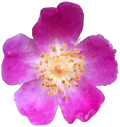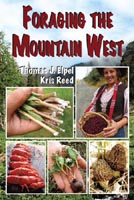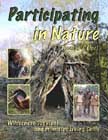| Thomas J. Elpel's Web World Portal  Wildflowers & Weeds 
|  Wildflowers-and-Weeds.com Plant Identification, Edible Plants, Weed Ecology, Mushrooms, and more. Home | Plant Identification | Plant Families Gallery | Edible Plants | Mushrooms | Links Desertification & Weed Ecology | Weed Profiles | E-Mail | Search this Site |
|
Rubiaceae If you are a coffee drinker, then the Madder family could be a real eye-opener. Coffee beans (Coffea) contain the purine-type alkaloid caffeine, which prolongs the useful life of many hormones, but especially adrenaline. This gives coffee its stimulant effect. Coffee can be used as a stimulant to counter the effects of depressant alkaloids and as an anti-emetic to keep you from vomiting (Kadans), which is ironic given that ipecac (Cephaelis) is in the same family. Other well-known members of the Madder family include the anti-malarial alkaloid quinine (Cinchona), and the ornamental Gardenia. Most plants of this family grow in the tropics, many of them as shrubs or trees. Native North American species are mostly herbs and in the northern states you will probably only find bedstraw (Galium). Key Words: Opposite or whorled leaves, 4 or 5 united petals, and a two-chambered ovary. Please e-mail Thomas J. Elpel to report mistakes or to inquire about purchasing high resolution photos of these plants.
There are more
Return to the Plant Families Index |
|
Looking for life-changing resources? Check out these books by Thomas J. Elpel:
|
|
|











